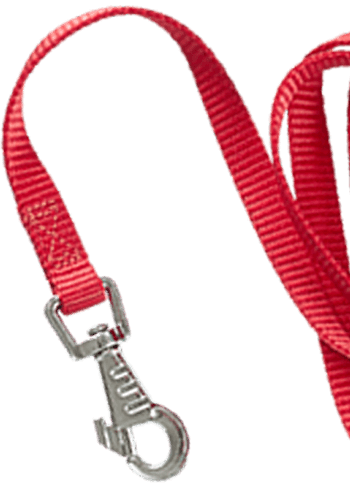Understanding K9 Body Language: A Beginner’s Guide
Learning to understand canine body language is essential for creating a strong bond with your dog and ensuring their well-being in various situations. Dogs communicate through body language, and being able to read their cues can help prevent misunderstandings, behavioral issues, and even potential conflicts. If you’re new to dog ownership, this guide will introduce you to the basics of K9 body language and what your dog might be trying to tell you. This will help you build a better relationship with your White Lab, English Cream Golden, or any other breed.
A Wagging Tail Does Not Always Mean a Happy Dog
Many people think a wagging tail always means a dog is happy, but that’s not the whole story. Dogs use their tails to communicate a wide range of emotions, from excitement to anxiety. Understanding the different types of tail movements can give you valuable insight into what your dog is really feeling, helping you respond to their needs more effectively.
If a dog has a short or bobbed tail, it can be more challenging to read their emotions through tail movements alone. However, these dogs still use other body language cues—like their posture, ear movements, and facial expressions—to communicate. You may notice subtle shifts in the way they hold their tail, even if it’s short. Combining those observations with the rest of their body language will still give you valuable insight into how they’re feeling. Paying close attention to their overall behavior will help you understand their emotions, even without the full range of tail signals.
- Wagging Tail: Most people think a wagging tail means a happy dog, but that’s not always the case. A loose, wide wag to each side typically signals happiness or excitement. However, a stiff, fast wag, whether high up or down low (especially if paired with tense body posture), can mean the dog is feeling agitated or alert.
- Wagging More to the Right: A tail that wags more to the right typically signals positive emotions like happiness or excitement. You might notice this when your dog greets familiar people or feels comfortable in a situation.
- Wagging More to the Left: If the tail is wagging more to the left, it could indicate that your dog is feeling uncertain, anxious, or cautious. This is often seen when they encounter something unfamiliar or potentially concerning.
- Tail Tucked: When a dog tucks their tail between their legs, it’s often a sign of fear, anxiety, or submission. This means the dog feels threatened or uncomfortable in the situation.
- Neutral Position: When the tail is in a natural, relaxed position, your dog is likely feeling calm and content.
Reading Ear Movements
Like their tails, a dog’s ears can say a lot about how they’re feeling:
- Ears Forward: If your dog’s ears are pricked up and pointing forward, they’re likely alert or curious. This posture indicates they’re focused on something.
- Ears Back: Ears flattened or pulled back against the head usually indicate fear, submission, or discomfort. This is a sign to give your dog space or check if something is frightening them.
- Neutral Ears: Relaxed ears that sit naturally usually show that your dog is calm and not overly focused on anything. How your dog’s ears sit naturally will depend on the breed. White Labs and English Cream Golden Retrievers, for example, have ears that naturally lie flat and flopped down, while a German Shepherd’s ears naturally stand up.
Watch the Eyes: The Windows to Their Emotions
Dogs express a lot through their eyes, and knowing what to look for can help you gauge their emotional state:
- Soft Eyes: When a dog’s eyes appear soft, without tension, and they’re blinking slowly, this usually means they’re feeling relaxed and happy.
- Hard Stare: If a dog gives a hard, direct stare with little to no blinking, it could indicate that they’re feeling threatened or on guard. This is often a sign of discomfort or aggression, typically paired with leaning back or walking away from the perceived threat.
- Whale Eye: When a dog shows the whites of their eyes (often called “whale eye”), they’re likely feeling anxious or stressed. It’s a sign that they’re uncomfortable with what’s happening around them.
Body Posture: Understanding Their Stance
A dog’s overall body posture is one of the clearest indicators of how they’re feeling:
- Relaxed and Loose: A dog that’s loose and wiggly, with a soft body and wagging tail, is feeling friendly and approachable.
- Tense and Stiff: A dog standing tall with stiff legs and body could be feeling defensive, on alert, or potentially aggressive. It’s important to be cautious if a dog’s body is rigid. Look for a straight, stiff tail if they have a long enough tail.
- Cowering or Low to the Ground: When a dog is crouched low, with their ears back and tail tucked, they’re showing fear or submission. This could mean they’re scared of something in their environment.
Mouth and Muzzle: What Their Lips and Tongue Tell You
Paying attention to a dog’s mouth can also give you insights into their mood:
- Relaxed Mouth: A dog with a slightly open mouth, relaxed lips, and a lolling tongue is usually happy and at ease.
- Licking Lips: Lip licking or yawning can be a sign of stress or anxiety, especially if it occurs in situations that wouldn’t make the dog physically hungry or tired.
- Bared Teeth or Snarling: If a dog pulls back their lips to show teeth or growls, it’s a clear sign that they’re feeling threatened or defensive. This is often a warning signal and should be taken seriously.
Play Bow: An Invitation for Fun
One of the easiest body language cues to recognize is the play bow. When a dog lowers their front end while keeping their rear end in the air, they’re inviting play. This playful gesture is a clear indication that your dog is feeling happy and wants to engage with you or another dog in a fun, friendly way.
Common Misinterpretations
- “He’s just wagging his tail!”: While wagging is often associated with happiness, a tail wag can also signal anxiety or arousal, especially if it’s stiff and quick. Always check the rest of the dog’s body language.
- “He’s smiling!”: Some dogs appear to smile by pulling their lips back, but this can actually be a sign of fear or submission. Look at other signals (like their ears or posture) to determine their true feelings.
Final Thoughts
Understanding your dog’s body language is an essential skill for building trust and improving communication between you and your furry friend. By paying attention to their cues, you’ll be able to recognize when they’re happy, anxious, playful, or uncomfortable, allowing you to respond appropriately. With practice, you’ll get better at reading these signals, and your bond with your dog will grow stronger. Just remember, every dog is different. Learning your own dog’s unique ways of expressing themselves will take time, but it’s well worth the effort!
Are you thinking about getting a White Lab puppy? Come visit Snowy Pines White Labs at our Ozark home or view our puppy live stream to see healthy dogs in action.
About the Author
Tom Massey has owned and operated Snowy Pines Labradors for over a decade. They have become the leaders in English Labradors in the US. He and his team serve customers all over the US and Europe. They house their "dog family" in a state of the art facility on a large farm in the Ozark Mountains. With an obsession for genetics and temperament they raise and train dogs known across the globe for health and personality. Tom serves the pet industry in many forms campaigning for ethical breeding, training, and pet ownership.


